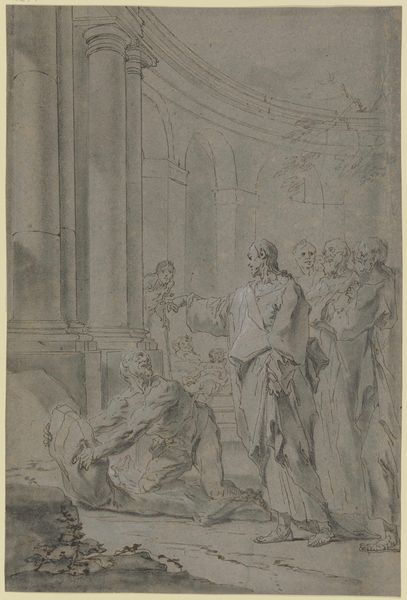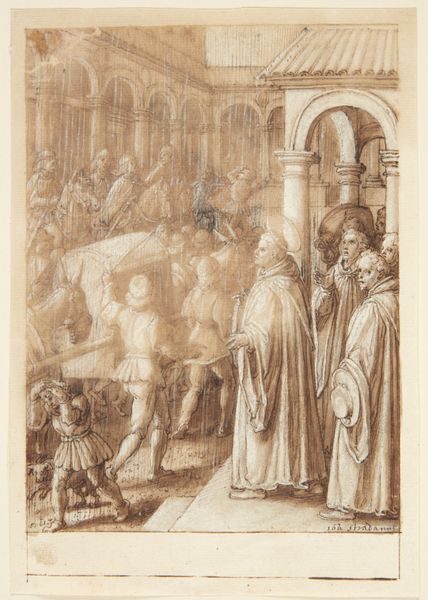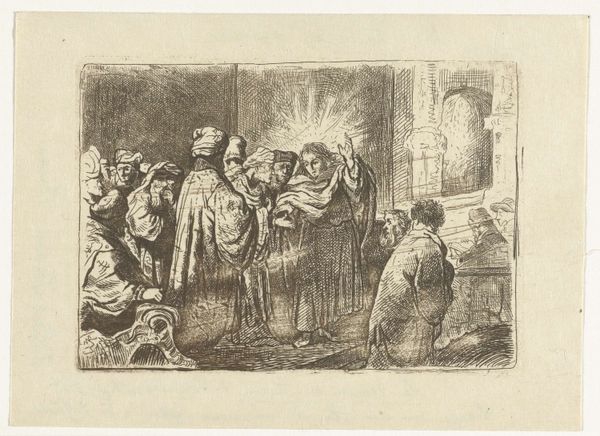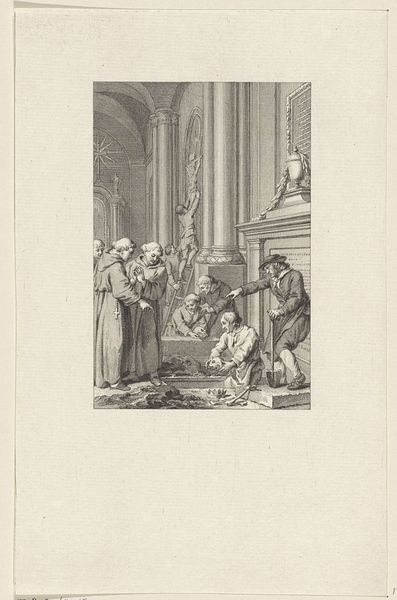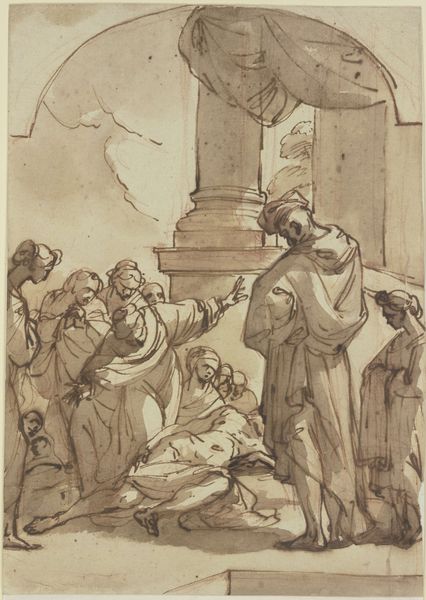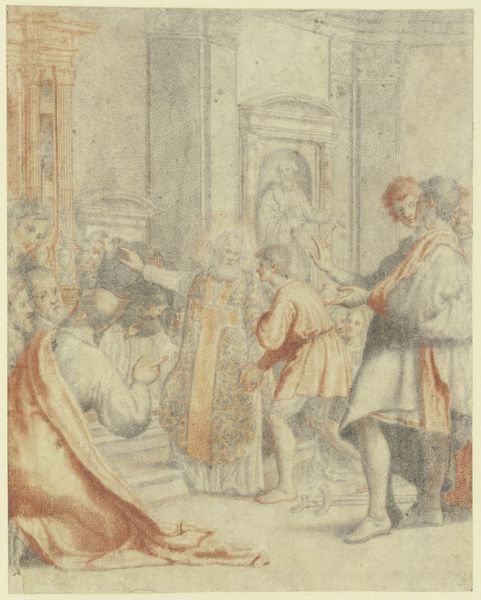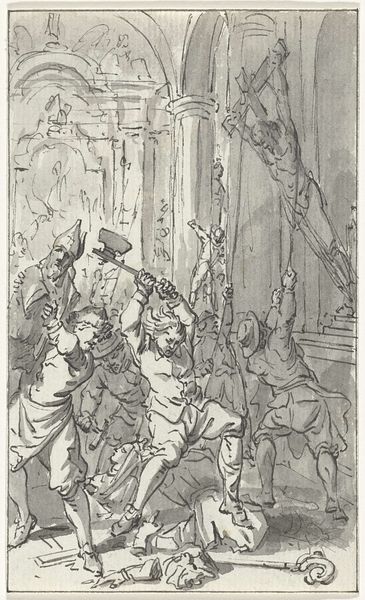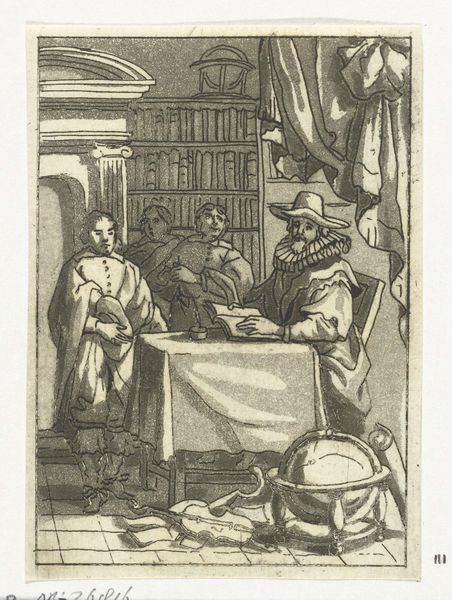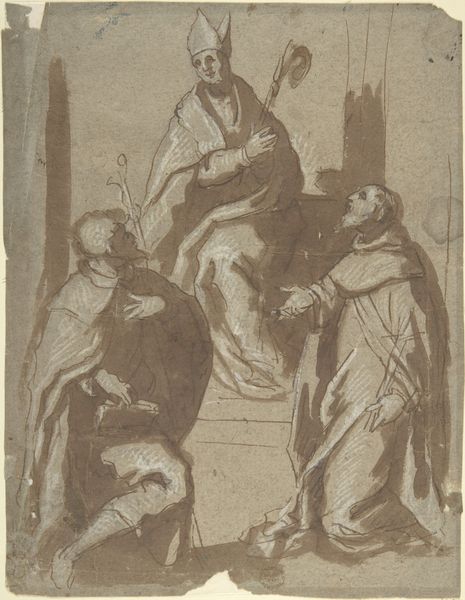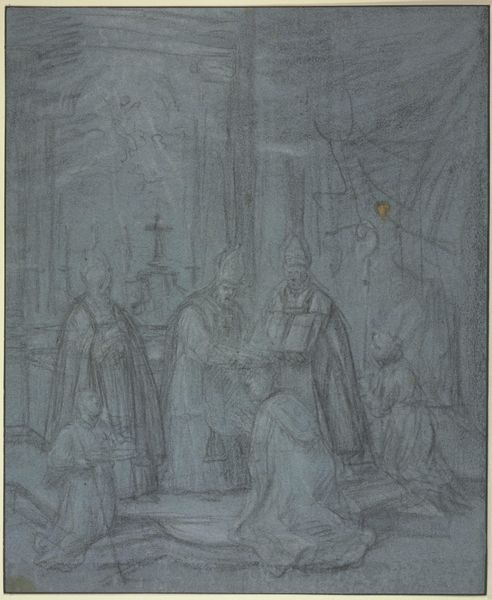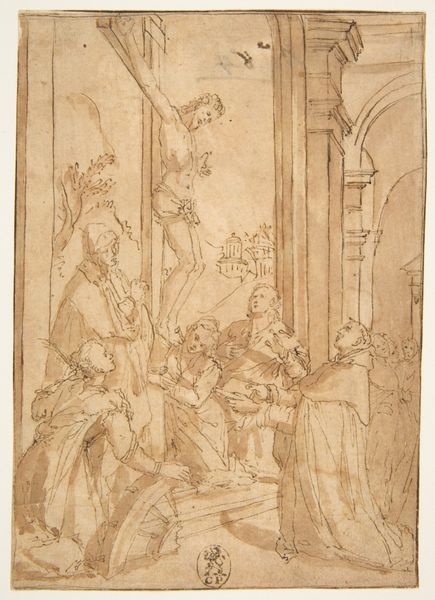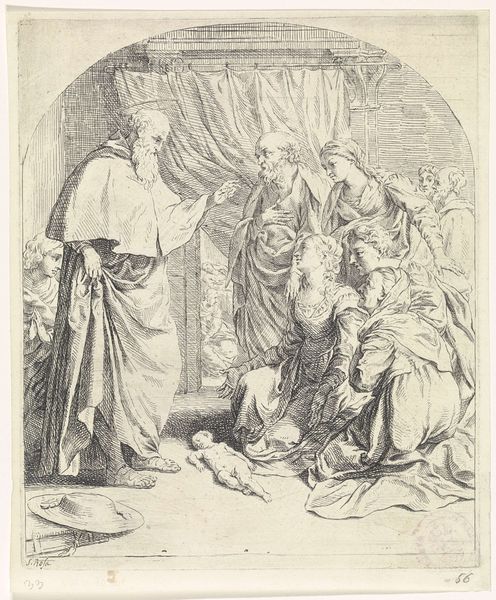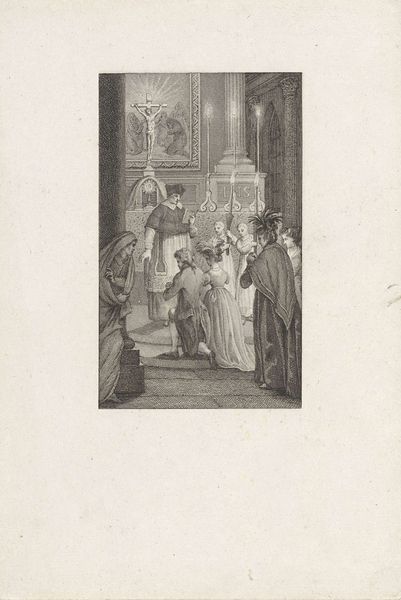
drawing, ink, pen
#
portrait
#
drawing
#
figuration
#
ink
#
romanticism
#
pen
#
history-painting
#
realism
Copyright: Public Domain: Artvee
Curator: Francisco de Goya's "Figures inside a church," created around 1812 to 1820, is a pen and ink drawing that embodies Romanticism's spirit. What are your initial thoughts? Editor: Dreary, almost haunted. Like witnessing a solemn ritual through a fogged-up window. There's a weight here, a somber atmosphere clinging to the page. Curator: The drawing is primarily concerned with the spatial arrangement of figures within an ecclesiastical interior. Note how Goya utilizes varying ink washes to differentiate planes and establish depth. The pen work, particularly in delineating the figures, possesses a nervous energy typical of his style. Editor: The figures feel swallowed by the space. Are they worshippers, conspirators, or just lost souls? Their anonymity intrigues me, these blurred forms against the architectural rigidity. It’s claustrophobic but also magnetic. Curator: That sense of anonymity highlights Goya’s genius. He uses the visual language of realism to question the nature of social roles, of historical events—challenging conventional interpretations through a distorted lens. He uses realism, not to replicate reality, but to express subjectivity. Editor: Distorted, definitely. But also fiercely human. You sense a deep emotional resonance, even without specifics. Did he have particular people or events in mind, do you think? Curator: Possibly. His personal experiences undoubtedly influenced his aesthetic. It’s difficult to say, however, given his penchant for social critique via figuration, coupled with the generalized setting. Yet this imprecision adds to its potent effect; its universal appeal. Editor: Precisely! And that contrast, the vagueness alongside that charged atmosphere... It elevates the drawing into a psychological landscape as much as a physical one. Goya manages to infuse the ordinary with this potent sense of foreboding. Curator: In totality, the artistic choices around spatial and chromatic dimensions underscore a thematic focus—religion, mortality and society's inherent imperfections. His compositional skills frame and communicate volumes within seemingly rudimentary ink. Editor: Exactly. The drawing may look simple, but it is conceptually and emotionally dense. Now, I see past the initial gloom into a much richer tapestry. Curator: Indeed. It epitomizes Romanticism's fascination with both inner and outer turmoil, manifested through skillful composition and striking tonal contrasts.
Comments
No comments
Be the first to comment and join the conversation on the ultimate creative platform.
